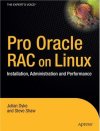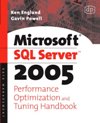作者:Evi Nemeth, Garth Snyder, Trent R. Hein
出版日期:November 2006
出版社:Prentice Hall
页数:1040
ISBN:0131480049
文件格式:PDF
“As this book shows, Linux systems are just asfunctional, secure, and reliable as their proprietary counterparts.Thanks to the ongoing efforts of thousands of Linux developers, Linuxis more ready than ever for deployment at the frontlines of the realworld. The authors of this book know that terrain well, and I am happyto leave you in their most capable hands.”
—Linus Torvalds
“The most successful sysadmin book of all time—because it works!”
—Rik Farrow, editor of ;login:
“This book clearly explains current technology with theperspective of decades of experience in large-scale systemadministration. Unique and highly recommended.”
—Jonathan Corbet, cofounder, LWN.net
“Nemeth et al. is the overall winner for Linuxadministration: it’s intelligent, full of insights, and looks at theimplementation of concepts.”
—Peter Salus, editorial director, Matrix.net
Since 2001, Linux Administration Handbook has been the definitive resource for every Linux®system administrator who must efficiently solve technical problems andmaximize the reliability and performance of a production environment.Now, the authors have systematically updated this classic guide toaddress today’s most important Linux distributions and most powerfulnew administrative tools.
The authors spell out detailed best practices for every facet ofsystem administration, including storage management, network design andadministration, web hosting, software configuration management,performance analysis, Windows interoperability, and much more.Sysadmins will especially appreciate the thorough and up-to-datediscussions of such difficult topics such as DNS, LDAP, security, andthe management of IT service organizations.
Linux® Administration Handbook, Second Edition, reflects the current versions of these leading distributions:
Red Hat® Enterprise Linux®FedoraTM CoreSUSE® Linux EnterpriseDebian® GNU/LinuxUbuntu® LinuxSharing their war stories and hard-won insights, the authors capturethe behavior of Linux systems in the real world, not just in idealenvironments. They explain complex tasks in detail and illustrate thesetasks with examples drawn from their extensive hands-on experience.






 评论 (1)
评论 (1) 